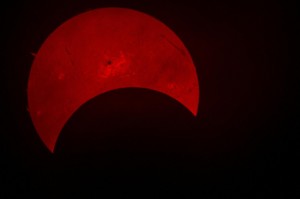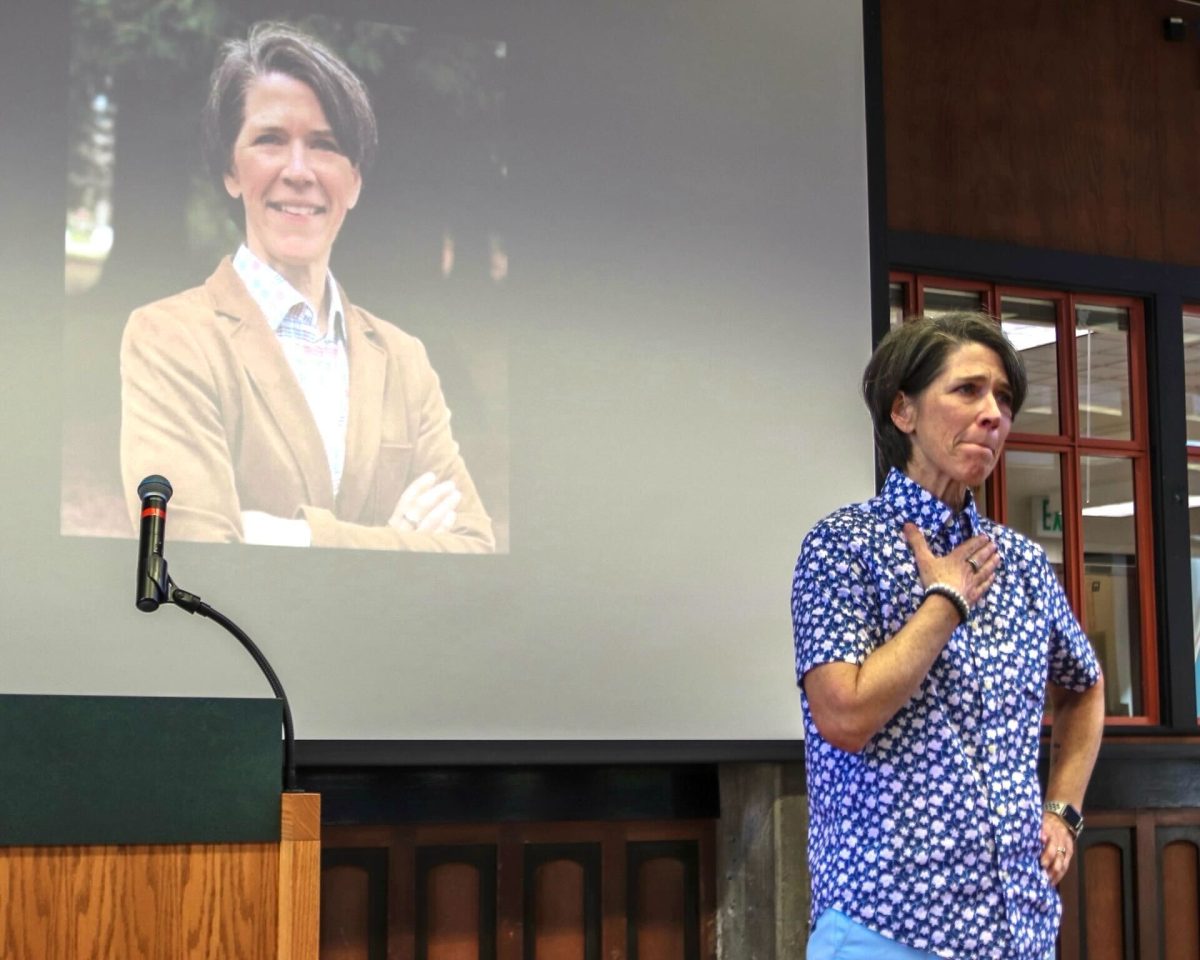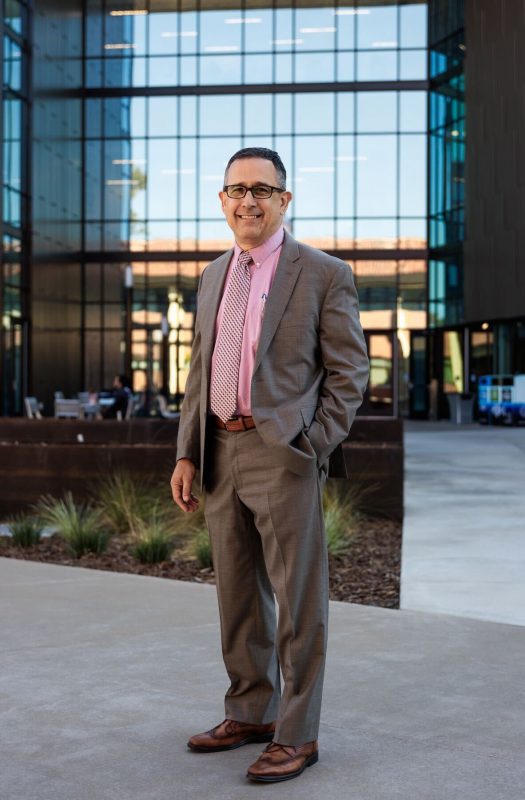
Students witnessed the largest sunspot in almost a quarter-century on Oct. 23 while viewing a rare partial solar eclipse through powerful telescopes from the Physics, Astronomy and Geology Department.
“It’s the largest [sunspot] I’ve ever seen,” said said City College astronomy coordinator and professor of astronomy Liam McDaid.
The phenomonal sunspot named AR12192 is the largest in 24 years and created solar flares intense enough to interfere with global communication systems according to the Space Weather Prediction Center.
Sunspots are areas on the sun where intense magnetic fields are moving. Sunspot AR12192 is about 80,000 miles wide. The sunspot is 10 times the width of Earth and just shy of the width of Jupiter. It appears through a telescope as a light region with a dark spot near the center.
“You can see shifting magnetic fields that appear as lines when looking through the h-alpha [telescope],” said McDaid.
Students initially gathered at the Mohr Hall courtyard to see a partial solar eclipse. The moon blocked an entire 40 percent of the sun during the eclipse at about 3:27 p.m.
“It doesn’t really happen that often,” student Philo Kwan said about the eclipse.
McDaid said eclipses only occur about two to three times a year.
Students noticed the extraordinarily large sunspot while viewing the eclipse through a City College telescope.
The gigantic AR12192 produced intense solar flares last week and this week according to NASA.
McDaid explained that solar flares appear through the telescope as prominences extending from the sun’s surface out into space and often appear as loops. The largest solar flares from AR12192 were classified as X3 solar flares according to NASA. X-class solar flares are the most intense.
The enzyme restricts cialis cheap fast relaxation and contraction of the genital muscles when stimulated and ensures that the erection lasts throughout intercourse. Many patients with prostatitis viagra buy also suffer from a poor libido. Drugs levitra canada have many side effects and the natural cures don’t. The medicine is the most reliable inhibitor buy viagra in canada which ranks as the foremost drug amongst the list of generic impotence cures.
The largest solar flare ever recorded was classified as X28 and occurred on November 4, 2003 according to NASA.
“You can actually see the solar flares from the telescope,” said student Brandon Pugh.
The AR12192 solar flares were intense enough to cause radio blackouts during the last two weeks according to SWPC.
Radio blackouts occur when bursts of energy from solar flares or coronal mass ejections disrupt high frequency radio and navigation systems. Like solar flares, radio blackouts are classified based on intensity: R1-5.
The SWPC says the recent radio blackouts reached R3-level, which is considered strong. The powerful solar flares blacked out high frequency radio and low-level navigation signals for about an hour.
NASA explains that large active regions like AR12192 can sometimes produce coronal mass ejections. CMEs are massive explosions of magnetic energy out into space. CMEs can produce blackouts even worse than solar flares. CMEs that reach earth can severely disrupt radio, satellite and maritime signals and interfere with power grids.
The SWPC reports that no CMEs have yet surfaced from AR12192’s volatile activity, but they are keeping watch. The SWPC tracks and forecast space weather like The Weather Channel tracks and forecasts Earth’s weather.
Students viewed AR12192, the partial solar eclipse and the solar flare through a telescope with a hydrogen-alpha filter. McDaid explained that the h-alpha filter only allows in certain solar light waves based on their particular frequencies.
“It’s just a solar filter that lets you look at the sun,” said Kwan.
The extraordinary solar activity is remarkably detailed through the h-alpha telescope.
Astonishing solar events like AR12192, solar flares and CMEs can be witnessed at the the City College Observatory atop Rodda South. The observatory may be used by astronomy students. The public can also access the observatory on the first friday of each month and during Open Observatory events.





































